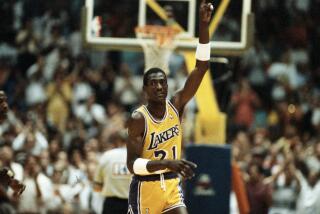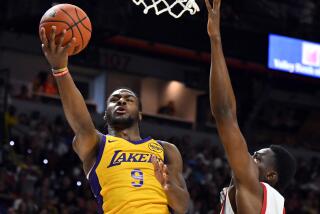How Michael Jordan became a brand
- Share via
Michael Jordan remains the OG signature shoe king 16 years after his last NBA game and 21 years after his last championship.
Introduced by the Chicago Bulls superstar in 1984 and later marketed by Nike in 1985 as the Air Jordan 1, created the basketball sneaker branding market. In fiscal 2018, Nike revenue from the Jordan Brand line hit nearly $2.9 billion, the company said, part of it coming from buyers who weren’t alive during Jordan’s last title run.
The Jordan Brand stretches from shoes to clothing and gear, including bags, backpacks and hats. Nike last year opened a mash-up of retail store and consumer experience called Jumpman L.A. on downtown Los Angeles’ South Broadway, which includes shoe and clothing customization, virtual reality training simulation and a rooftop basketball court.
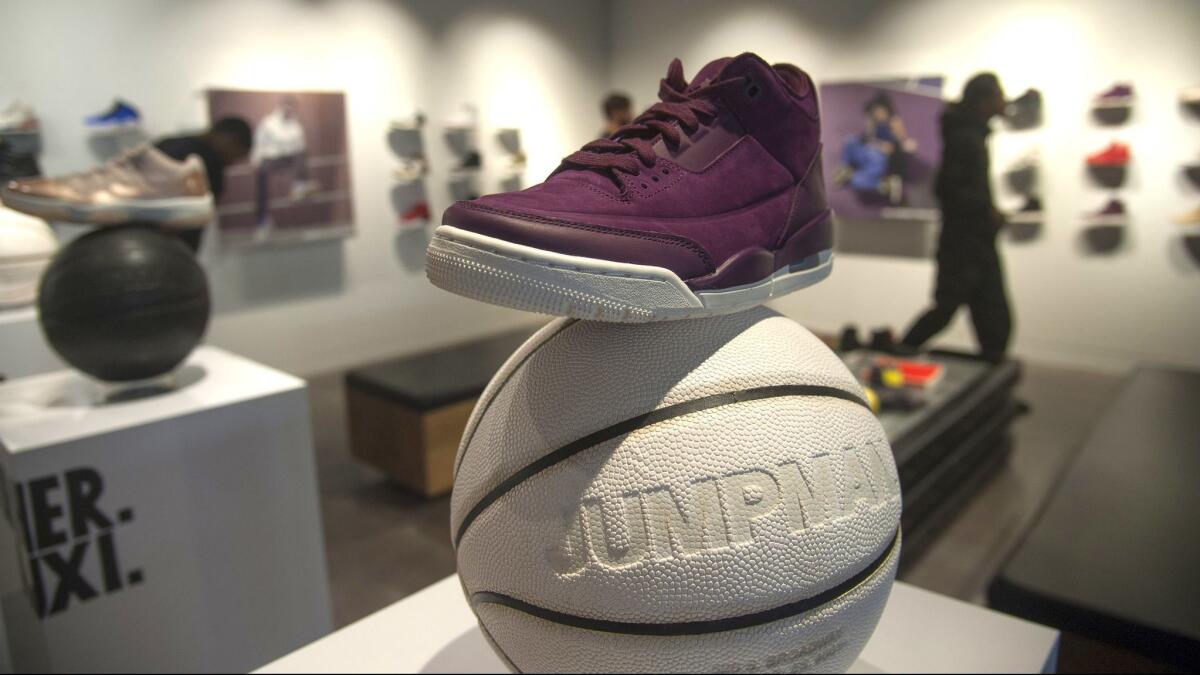
But what today seems like the no-brainer that should have enticed bids from every major athletic shoe brand should be viewed more accurately as a first-of-its-kind gamble that almost never happened. Jordan laughed at the “Air Jordan” name, hated the look of the shoe and almost skipped the meeting with Nike.
“He didn’t even want to fool with Nike,” said Roland Lazenby, author of the 2014 book “Michael Jordan: The Life.”
FULL COVERAGE: From Nike to Gucci, a brief history of basketball-inspired sneakers »
Jordan’s mother, Deloris, Lazenby said, part of a family of former North Carolina sharecroppers who believed strongly in economic empowerment, insisted he attend. “And Nike gave him an unbelievable deal, a 25% royalty. And it would take years before someone else in the shoe industry would get that,” he said.
Nike too needed a lot of convincing. In 1984, Jordan had been part of a historic NBA draft that included one of the league’s best big men, Hakeem Olajuwon; one of its most dominant power forwards, Charles Barkley; and the league’s all-time best at dishing out assists, John Stockton.
The fact that Nike would wind up throwing virtually all of its shoe marketing money behind Jordan was hardly assured. Lazenby said it took a small cadre of Jordan backers, including Nike marketing legend Sonny Vaccaro, to convince a very skeptical Phil Knight, one of Nike’s co-founders.
“Phil Knight was mildly interested at best,” Lazenby said. “But Vaccaro was relentless, and he soon formed an allegiance with Rob Strasser and with Peter Moore. They were both at Nike, and they were essential guys in driving the whole Jordan idea forward.”
The third intangible, Lazenby said, was Jordan’s play. “He was the guy who could fly,” Lazenby said. “Ultimately it was his competitiveness that wowed global audiences.”
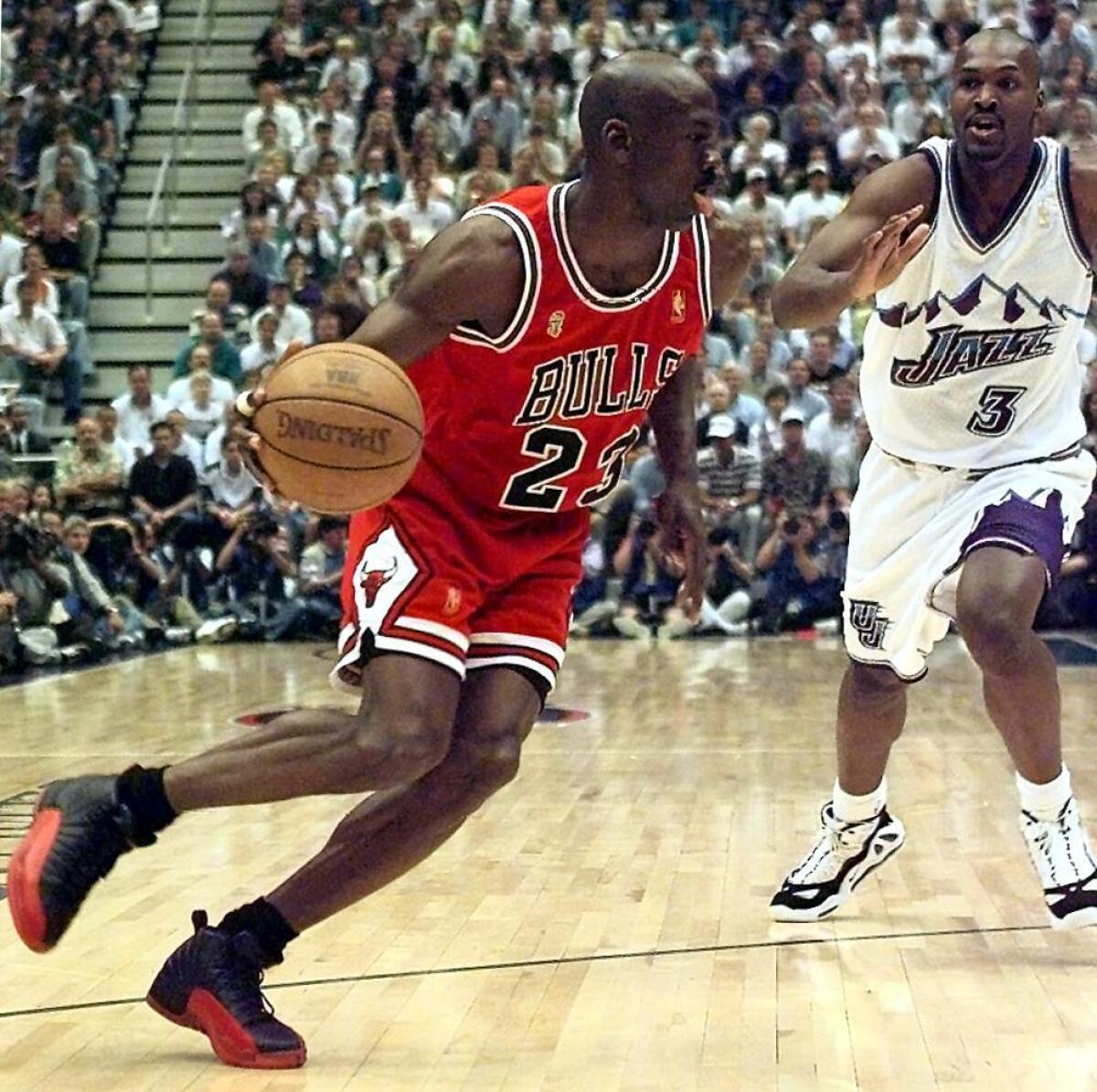
Jordan has been as surprised as anyone about his lasting appeal.
“‘First I thought it was a fad,’” Lazenby said the normally reticent Jordan told him in 2014. “’But it’s far greater now than it used to be. The numbers are just outrageous.”
That, however, doesn’t fully explain Jordan’s remarkable brand staying power at age 55. Three Jordan Brand shoes remain among the current 10 top-selling athletic shoes: the Jordan XI Low, Jordan 1 High OG and the Jordan IX Mid, according to market research firm NPD Group.
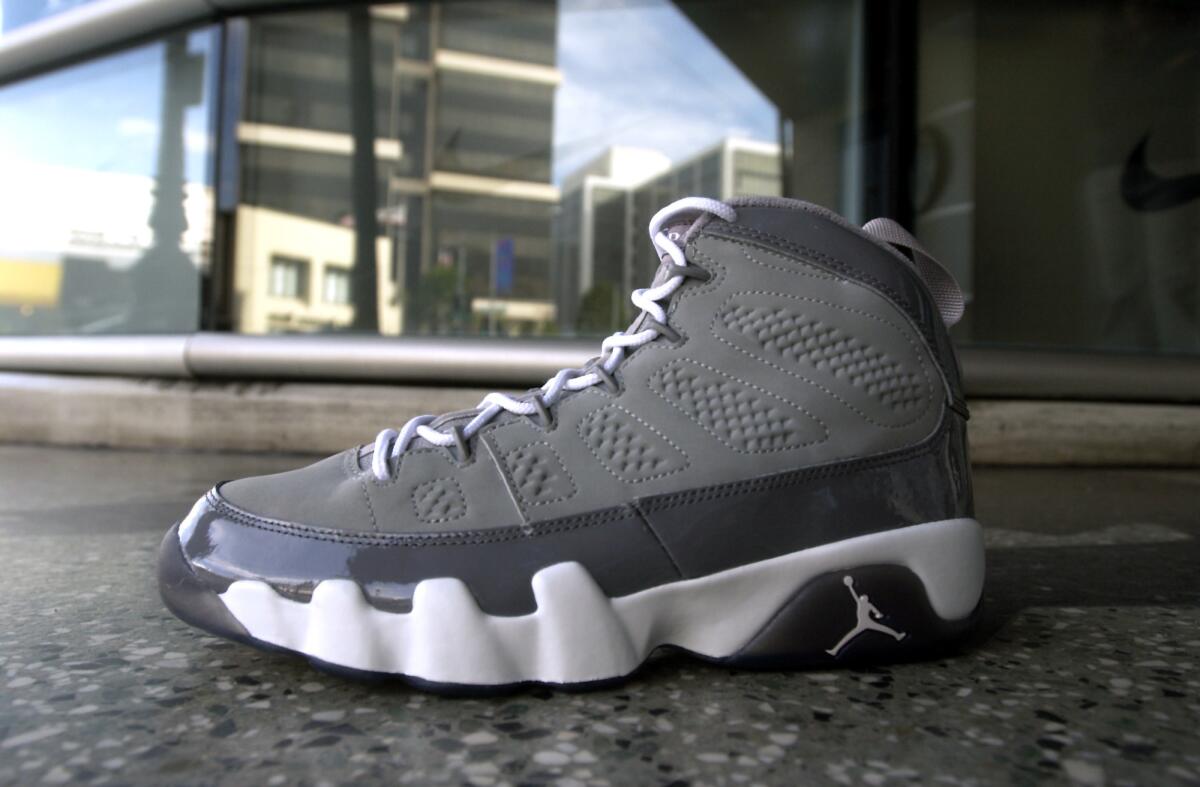
“What you have here is a once-in-a-generation athlete who has transcended his sport and has become ingrained not only in the sports world, but in popular culture as well,” said sports marketing expert George Belch, professor and chairman of the marketing department at San Diego State University.
Jordan is “kind of the epitome of cool in many ways,” Belch said. “His influence just seems to go from one generation to the next. He played before they were even born, yet he becomes this very trustworthy, almost timeless brand image that just really seems to represent winning and excellence and everything else.”
Twitter: @RonWLATimes
More to Read
Inside the business of entertainment
The Wide Shot brings you news, analysis and insights on everything from streaming wars to production — and what it all means for the future.
You may occasionally receive promotional content from the Los Angeles Times.
